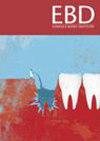Efficacy of different adhesive systems in bonding direct resin composite restorations: a systematic review and meta-analysis
IF 2.3
Q3 Dentistry
引用次数: 0
Abstract
This study aimed to identify and evaluate scholarly research on the efficacy, durability, and long-term stability of various adhesive systems used for bonding direct resin composite restorations and to identify factors influencing bonding performance, such as adhesive composition, application protocol, substrate type, and etching technique. An all-inclusive electronic database search for peer-reviewed scholarly journal articles was conducted using PubMed, ScienceDirect, Google Scholar, Dimensions, and the Cochrane Library for research articles investigating the effectiveness of different adhesive systems in direct resin composite restorations, excluding reviews, meta-analyses, opinion pieces, and case reports. The risk of bias was assessed using the Cochrane tool (Robvis 2.0). Data were extracted and thematically analyzed, and quantitative data were statistically analyzed using Review Manager software. Dichotomous data were evaluated using the Mantel-Haenszel method, applying a random effects model and 95% confidence interval. The database search yielded 1632 potential articles, of which 14 were included in this study. Several adhesive systems exhibit excellent tensile bond strength. In addition, the type of resin composite, adhesive system, and artificial aging significantly influenced the bonding performance of resin composite restorations. However, the failure rates were low in the different adhesive systems, showing comparable results between the two-step etch-and-rinse and one-step self-etch adhesive systems (p = 0.71). The results showed an overall trend of high bonding effectiveness with a low incidence of adverse events, such as postoperative sensitivity, adhesive failure, and fractures. The study results emphasize the importance of selecting appropriate adhesive systems based on clinical case requirements, restoration characteristics, and patient factors to enhance bonding efficacy, durability, and long-term stability.

不同粘接剂系统在直接树脂复合修复体中的疗效:系统回顾和荟萃分析。
目的:本研究旨在识别和评估用于直接树脂复合修复体粘接的各种胶粘剂系统的有效性、耐久性和长期稳定性的学术研究,并确定影响粘接性能的因素,如胶粘剂成分、应用方案、基材类型和蚀刻技术。材料和方法:使用PubMed、ScienceDirect、b谷歌Scholar、Dimensions和Cochrane图书馆对同行评审的学术期刊文章进行了全面的电子数据库搜索,以调查不同粘接剂系统在直接树脂复合修复中的有效性,不包括综述、荟萃分析、观点文章和病例报告。使用Cochrane工具(Robvis 2.0)评估偏倚风险。提取数据并进行专题分析,定量数据使用Review Manager软件进行统计分析。采用Mantel-Haenszel方法对二分类数据进行评估,采用随机效应模型和95%置信区间。结果:数据库检索得到1632篇潜在文献,其中14篇被纳入本研究。几种胶粘剂系统表现出优异的拉伸粘合强度。此外,树脂复合材料的种类、粘结体系和人工老化对树脂复合修复体的粘接性能有显著影响。然而,在不同的粘合剂系统中,故障率很低,两步蚀刻-冲洗和一步自蚀刻粘合剂系统之间显示出可比的结果(p = 0.71)。结果显示,总体趋势是高粘接效果和低发生率的不良事件,如术后敏感,粘接失败和骨折。结论:研究结果强调了根据临床病例要求、修复特点和患者因素选择合适的粘接系统对提高粘接效果、耐久性和长期稳定性的重要性。
本文章由计算机程序翻译,如有差异,请以英文原文为准。
求助全文
约1分钟内获得全文
求助全文
来源期刊

Evidence-based dentistry
Dentistry-Dentistry (all)
CiteScore
2.50
自引率
0.00%
发文量
77
期刊介绍:
Evidence-Based Dentistry delivers the best available evidence on the latest developments in oral health. We evaluate the evidence and provide guidance concerning the value of the author''s conclusions. We keep dentistry up to date with new approaches, exploring a wide range of the latest developments through an accessible expert commentary. Original papers and relevant publications are condensed into digestible summaries, drawing attention to the current methods and findings. We are a central resource for the most cutting edge and relevant issues concerning the evidence-based approach in dentistry today. Evidence-Based Dentistry is published by Springer Nature on behalf of the British Dental Association.
 求助内容:
求助内容: 应助结果提醒方式:
应助结果提醒方式:


